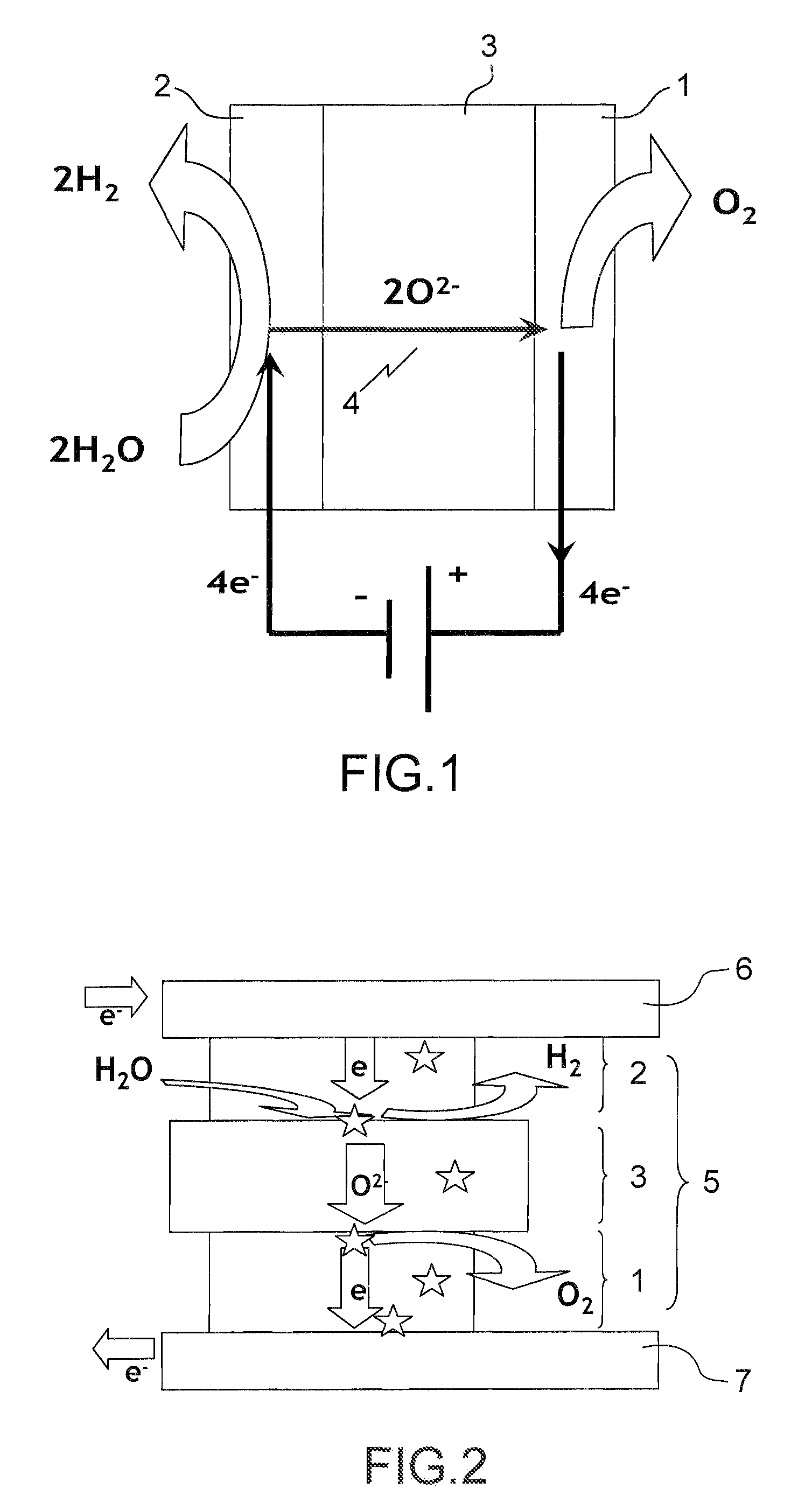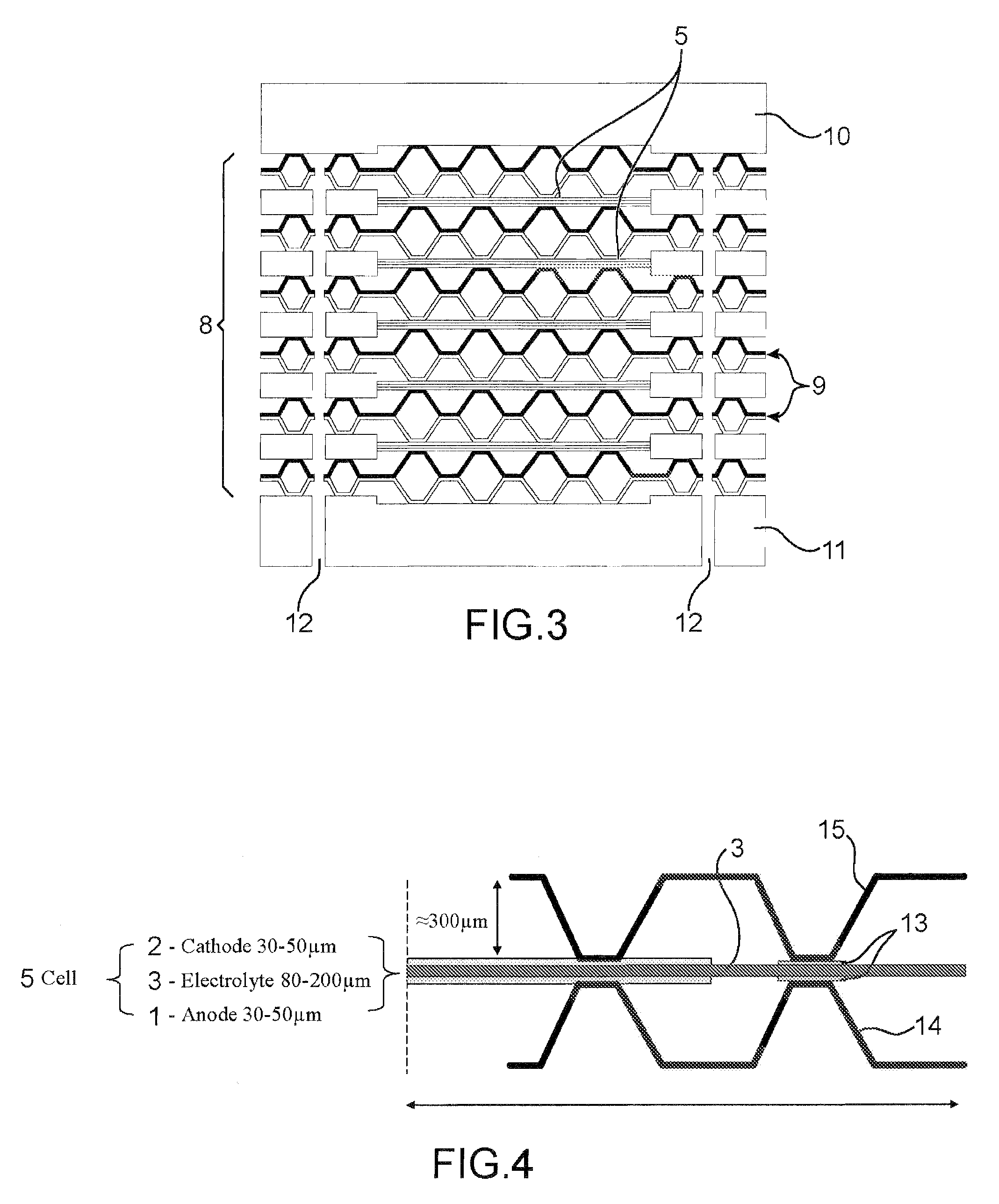Glass compositions for gaskets of apparatuses operating at high temperatures and assembling method using them
a technology of glass compositions and gaskets, applied in the field of glass compositions, can solve the problems of high temperature corrosion or evaporation problems, complex industrial development of this type of vitroceramic glasses, and delicate development of heat treatments for vitroceramic glasses, so as to achieve the optimal balance between flexibility and rigidity, and satisfy the effect of rigidity
- Summary
- Abstract
- Description
- Claims
- Application Information
AI Technical Summary
Benefits of technology
Problems solved by technology
Method used
Image
Examples
example 1
[0257]In this example, measurements of viscosity are carried out for both glasses (A) according to the invention described above, designated as > and > and for the two glasses (B) according to the invention described below, designated as > and > and for the comparative glass Schott® 8422.
[0258]These measurements were carried out in two ranges of temperatures, (550° C.-700° C.) and (1,000° C.-1,500° C.) which were correlated through a law of the VFT type
[0259](logη=A+BT-T0).
[0260]In FIG. 5 in which the plastic, viscous and molten domains of the glasses are illustrated, it is noted that in the range from 700° C. to 850° C. which is the operating range currently used in apparatuses such as high temperature electrolyzers or high temperature fuel cells, the glasses > and > according to the invention have a visco-plastic behavior giving the gasket an optimum combination of flexibility and rigidity.
[0261]This is also the case of the glasses VsC33 and VsC34.
[0262]In particular, at 800° C....
example 2
[0263]In this example, the interactions of the glass compositions according to the invention and of the Schott® 8422 glass with various materials making up an electrolyzer at the operating temperature, i.e. 800° C., and for a period of 100 hours in an oxidizing atmosphere, are investigated.
[0264]These tests are conducted in the laboratory with samples of materials representative of the electrolyzer, on which a small amount of glass slurry, paste is positioned, applied in the same way as for the tests on the prototypes of electrolyzers. The glass / metal and glass / ceramic samples are treated in air in a muffle furnace.
[0265]The interface is then observed with a scanning electron microscope (SEM).
[0266]Study of the Interaction of the > Glass with the > Ceramic for 100 Hours at 800° C. in an oxidizing atmosphere.
[0267]FIG. 6A is a photograph taken with an SEM of the interface between the > glass according to the invention and the YSZ ceramic after 100 hours of operation at 800° C.
[0268]I...
example 3
[0278]In this example, seal tests are conducted by measuring the pressure drop on the Schott® 8422 glass and on the > glass according to the invention.
[0279]The assembly for exerting pressure used for these measurements is schematized in FIG. 7.
[0280]The assembly essentially consists of 3 portions:[0281]a metal sole (71) for example made of steel;[0282]a ceramic disk or sole (72) simulating the cell;[0283]a metal bell (73).
[0284]As this may be seen in FIG. 8, the test gasket is the internal gasket (74), deposited in the groove formed by a portion of the metal sole and the flank (75) of the ceramic disk. The so-called constraint gasket (76) allows the upper portion of the assembly to be sealed and pressure to be applied for the seal test of the internal gasket (74).
[0285]The assembly of FIG. 7 is positioned in a circuit for applying the pressure fed by an argon circuit (77) comprising adjustment (78), purging (79) and isolating (80) valves and a sensor (81) (see FIG. 9).
[0286]The ope...
PUM
| Property | Measurement | Unit |
|---|---|---|
| temperature | aaaaa | aaaaa |
| glass transition temperature | aaaaa | aaaaa |
| glass transition temperature | aaaaa | aaaaa |
Abstract
Description
Claims
Application Information
 Login to View More
Login to View More - R&D
- Intellectual Property
- Life Sciences
- Materials
- Tech Scout
- Unparalleled Data Quality
- Higher Quality Content
- 60% Fewer Hallucinations
Browse by: Latest US Patents, China's latest patents, Technical Efficacy Thesaurus, Application Domain, Technology Topic, Popular Technical Reports.
© 2025 PatSnap. All rights reserved.Legal|Privacy policy|Modern Slavery Act Transparency Statement|Sitemap|About US| Contact US: help@patsnap.com



